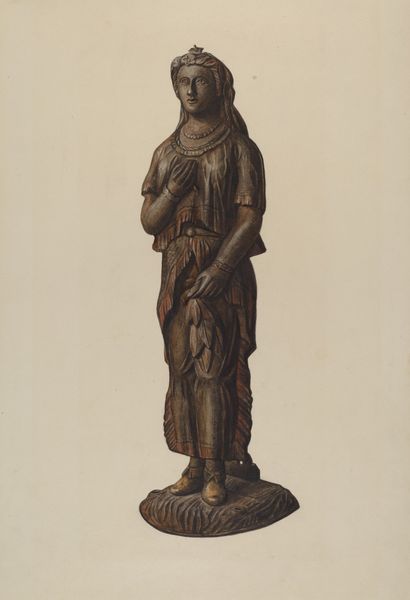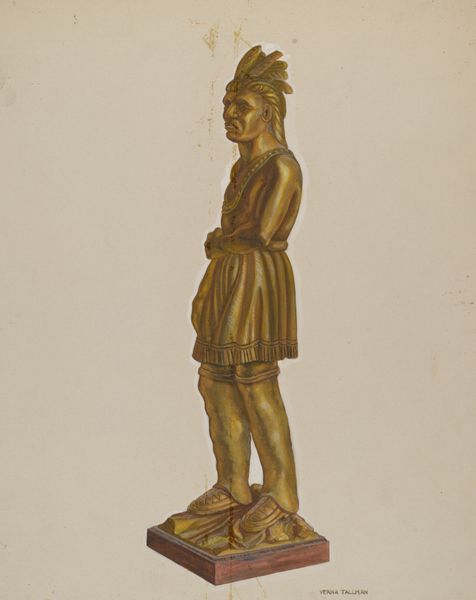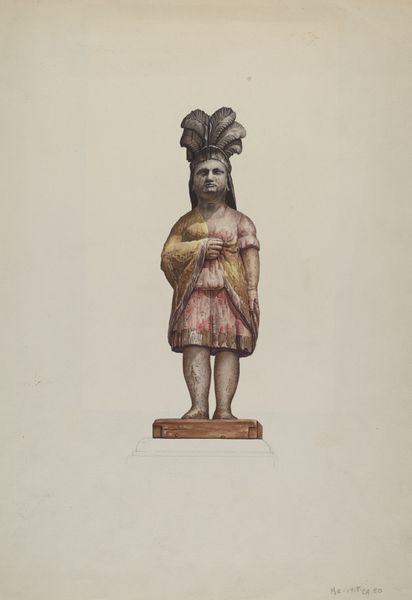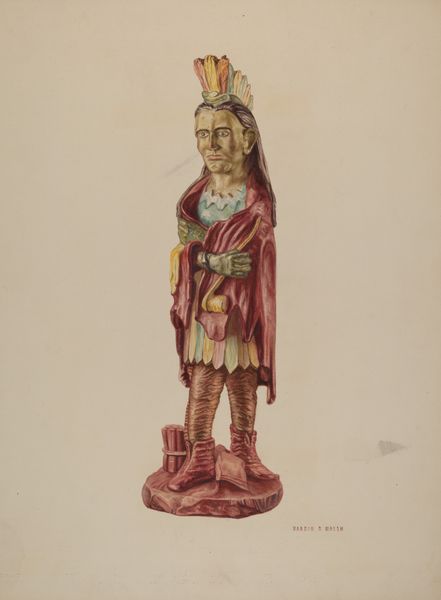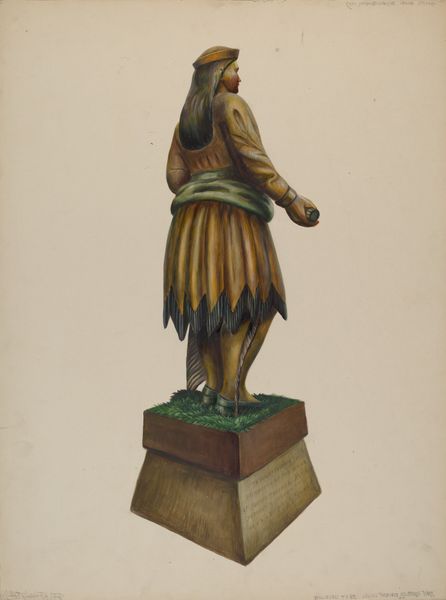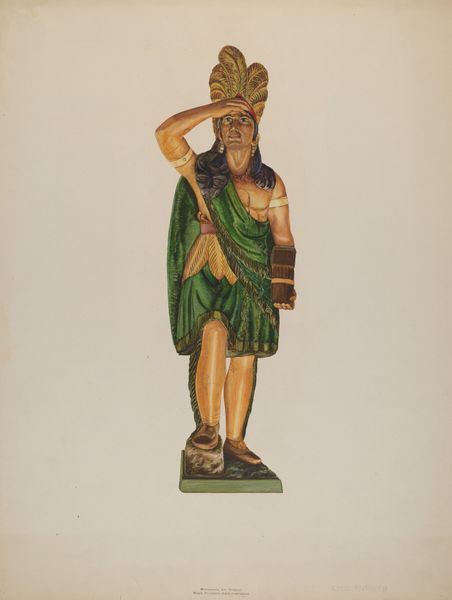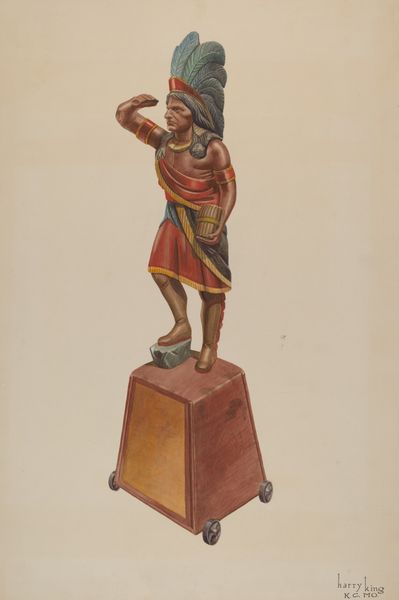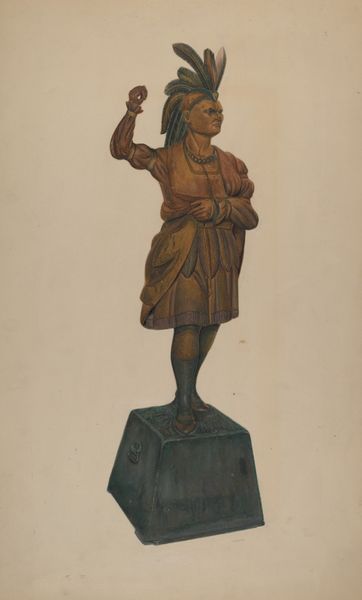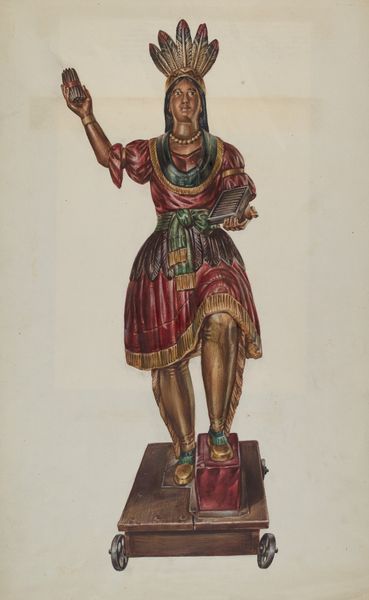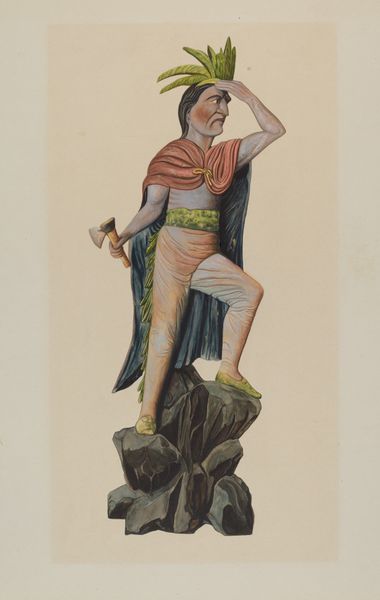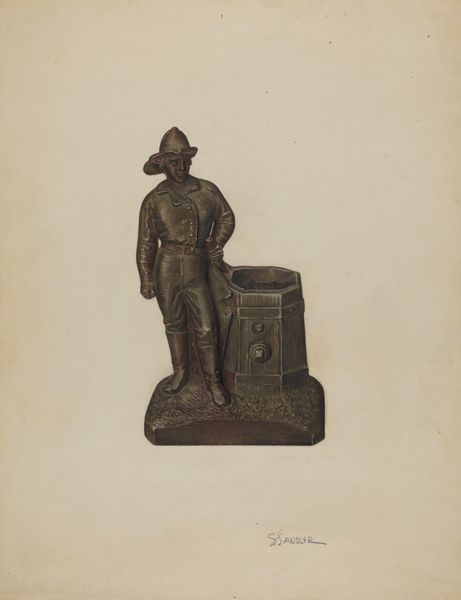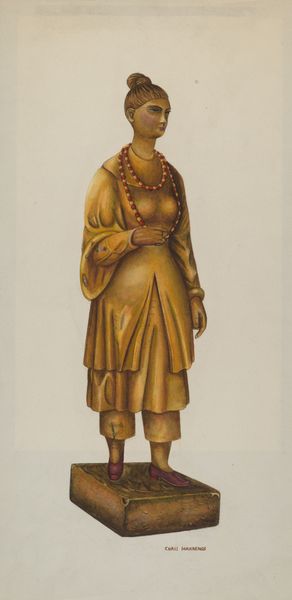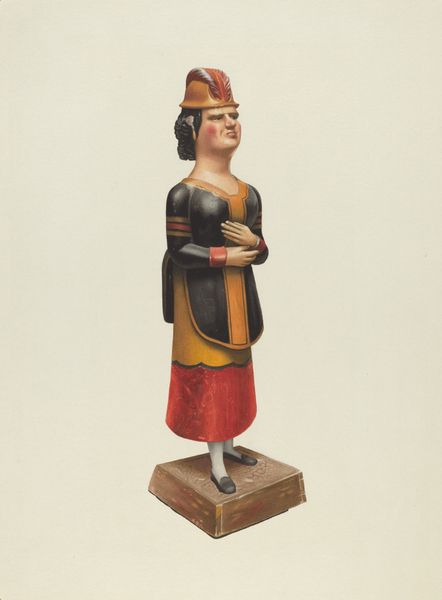
drawing, carving, sculpture, wood
#
portrait
#
drawing
#
carving
#
sculpture
#
wood
#
portrait art
#
realism
#
statue
Dimensions: overall: 35.7 x 24.3 cm (14 1/16 x 9 9/16 in.)
Copyright: National Gallery of Art: CC0 1.0
Editor: We’re looking at "Figure of a Felon," a wood carving from around 1938 by Donald Donovan. It's a sculpture of a man, seemingly in ragged clothing and wearing a top hat, with his hands restrained. The figure exudes a quiet resignation, almost a defiance. How do you interpret this work? Curator: This piece compels us to consider the societal context in which it was created. Donovan made this during the Depression Era, yes? The figure’s attire— the top hat juxtaposed with his tattered clothing and restraints —speaks volumes about class struggle, systemic inequality, and the performance of identity under duress. To me it begs the questions of who gets punished and who is deemed criminal. Editor: That makes sense. The hat feels like an accusation almost, rather than just an item of clothing. Were depictions of social injustice common at that time? Curator: Artists of that era often responded to the social and economic hardships of the working class. Think of Dorothea Lange's photographs or Diego Rivera's murals, both addressing labor and inequality. Donovan, however, zeroes in on the individual, perhaps to show the personal impact of a flawed system. I wonder if Donovan himself identified with this figure? What do you think about the subject’s averted gaze? Editor: It seems like he’s trying to hold onto some dignity, refusing to meet the viewer’s eye. A silent protest perhaps? Curator: Exactly. The realism in this sculpture invites empathy. It challenges viewers to confront the narratives we construct around crime and punishment and the relationship to poverty, gender, and race. Who benefits from these narratives, and who is silenced? Editor: Thinking about it that way really shifts my perspective. I initially saw only a figure of defeat, but now I recognize a more complex narrative of resistance and social commentary. Curator: Precisely! Art like this encourages critical engagement with power structures and invites us to consider our own roles in perpetuating or challenging them. I appreciate your insightful interpretations today. Editor: Thank you, I learned a lot about art's relationship to social justice today.
Comments
No comments
Be the first to comment and join the conversation on the ultimate creative platform.
